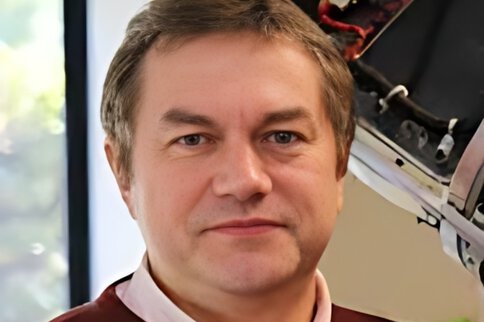Immersion in photonically unlocked, fantastic worlds
Dr. Marc P. Georges, head of the optics laboratory at the CSL Space Center of the University of Liège, speaks as General Chair of the SPIE Optical Metrology 2023 about the megatrends towards artificial intelligence and multimodal metrology, tightening links between metrology and imaging, and the highlights of this year's conference.
What are the focuses of SPIE Optical Metrology?
Our six conferences cover a wide range of topics, such as optical metrology for industrial inspection and its automation, the role of modeling and simulation and the possibilities offered by multimodal sensor technology and artificial intelligence. There is also a conference where the use of optical measurement and sensor technologies in art, archeology and architecture will be discussed. We must also not forget optical metrology in combination with imaging to characterize biomaterials. In other words, we have a large thematic block that focuses on classic use in industrial quality control. Here, the presentations highlight fascinating development trends that are connected directly with digitalization and automation. On the other hand, we will be providing very specific insights into applications in art and biomedical research.
Are there currently any fascinating technology trends in your segment of photonics?
Most certainly: very important presentations deal with the use of artificial intelligence and multimodal approaches. The combination of various optical methods and spectra is an important topic to achieve more accurate and reliable results. Optical metrology at small scales is another clear trend. This is because in application areas such as the semiconductor industry or in materials science and biomedicine, the aim is to obtain a deeper understanding – sometimes even the nanometer scale. This trend is very clearly reflected in the submitted presentations. In the life sciences, there is also an increasing focus on combining imaging and measurement techniques to get a better understanding of live cell dynamics, enabling tumor diagnosis, as well as manipulation of species by light for example. Another trend is about sensor technologies, metrology and imaging which are growing ever closer together. To briefly return to the subject of artificial intelligence: it is no longer used just for evaluation and analysis but is now also used to reconstruct optical signals and improve image quality. For example, learning mechanisms help optimize images with weak resolutions or images that are unclear due to a lack of light intensity so that metrological findings can be derived. To do this, specially trained algorithms supplement and correct pixels in the original image. These procedures do not replace optics; rather, they complement optical metrology and help us push the boundaries of what can be measured. This co-design of optics and computing harbors enormous potential.
Which conference highlights would you like to draw the LASER community’s attention to?
Our multiple award-winning plenary speaker Zeev Zalevsky from Bar-Ilan University in Israel will be talking about his research into nanosensors, which could continuously and simultaneously capture many biomedical parameters. In my view, it is interesting that Zalevsky’s receipt of the SPIE Chandra S. Vikram Award, which is extremely prestigious in our discipline, indicates a paradigm shift: in the past, all the prize winners worked in the field of classic metrology. He, on the other hand, uses a combination of laser excitation, an imaging camera and artificial intelligence to capture secondary speckle patterns with regard to time and space so precisely that nanometric values can be derived from them. This opens up new opportunities for remote biosensors and medical diagnostics. I am looking forward to this talk as much as to the sessions dealing with optical methods for inspection, characterization and imaging of biomaterials. There, we will dive into the absolutely fantastic worlds that photonic research is gradually opening up to us.
Here, you will find all the relevant information about SPIE Optical Metrology 2023

